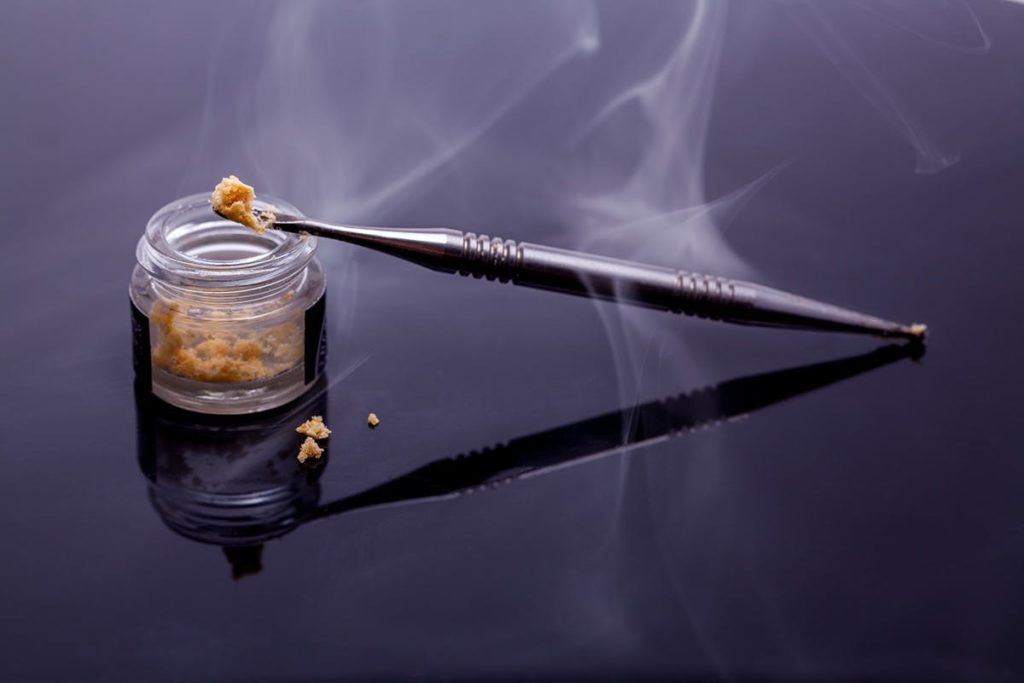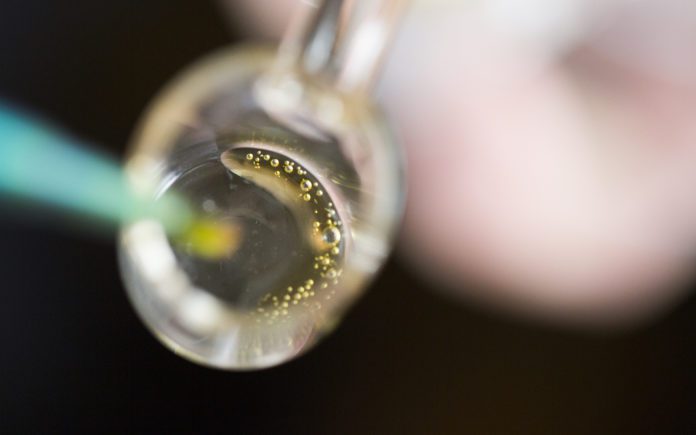Have you ever tried hitting a dab but received no high from it? It’s a more common event than you’d think.
Most of the time, this happens because the wax is overheated and the terpenes in it are destroyed. Don’t know what that means? No worries, we’ll explain it all.
Keep reading to learn about the ideal dabbing temperatures and how to achieve them.
The Chemical Structure of Cannabis When Heated Up
Whether smoked or ingested, cannabis is always heated up before consumption. Well, at least if you want to feel a high after consuming cannabis that is.
For smoking, the heating up mostly comes from torch heating up a joint or a bowl. Some nectar collectors have heating coils within the tips.
Edibles are mostly always baked or cooked in some way as well. Brownies and other confectionary sweet treats are baked in an oven, while candies are melted in a pot on the stove.
Have you ever considered why you don’t see any raw consumption of cannabis?
That’s because it wouldn’t produce a high. You see, THCA is a compound that comes from cannabis plants (like marijuana). It’s the chemical that produces a high in your body when you smoke. It does this by fitting perfectly into the CB1 receptors in your body’s endocannabinoid system.
However, THCA itself has no psychoactive effect if simply ingested raw. The high you feel after taking a hit or eating a brownie comes from an altered form of THC that only occurs after the substance is heated up.
For those interested in the science behind this, know that the molecular compound of THCA (the A just stands for acid) has an extra carboxyl molecule on it. Heating cannabis removes this extra molecule through a process called decarboxylation.
What’s So Important About Temperature?
If you ingest or smoke THC without heating it first, you won’t experience a high. This also stands true for CBD, THC’s cousin, except CBD produces no high but instead promotes relaxation, sore muscle relief, and pain relief.
So with that in mind, heating cannabis is important if you want to get high.

However, it might be tempting to simply heat THC like one would any other ingestible substance. You’d light it up, heat it to a certain point, and prevent it from burning. Simply right?
Not quite. If you heat cannabis past its ideal point, it’ll turn into CBN. CBN is commonly found in aged THC and THC burned at too high of a temperature.
CBN, or cannabinol, is similar to THC. The main difference is that the former is much, much less psychoactive. But there are some benefits to CBN such as having antibacterial effects, treating glaucoma, and promoting better sleep.
Now there’s much more that goes into why certain temperatures are preferred for dabbing than others. One of the biggest reasons has to do with the terpenes inside cannabis.
All About Terpenes
Terpenes are the aromatic and flavor-packed compounds found on cannabis. Terpenes look like little crystals on the cannabis plant and produce precursor compounds like THCA and CBDA. These two precursor compounds then give life to THC and CBD (respectively) when heated up.
On a related note, terpenes are what make other plants like lavender and rosemary smell nice and pretty.
Now one of the reasons that people choose to dab is because of the aromatic and flavorful experience compared to traditional smoking. Unfortunately, a good chunk of terpenes is destroyed in the process. This happens because CBD and THC have higher boiling points than terpenes.
Naturally, trying to find a good temperature for hitting dabs is challenging. The range of dabbing is very much a spectrum. Some people might want to hit a higher temperature dab, while others might want a low-temperature dab.
Everything really depends on the user, but in the end, there are some benefits to both as well as potential drawbacks. Let’s take a look at some of the benefits and drawbacks of high vs. low temperatures in dabbing.
High Temperature Dabs: Pros and Cons
Let’s start by talking about high-temperature dabs. High temp dabs are some of the most common mistakes committed by new dab users. We’re not talking just above the ideal temperature though, we mean actual blazing hot dabs.
These mistakes happen because new dab users let the nail turn into a bright red color before putting the substance in. But that bright red color indicates that the nail is around 1000F. That high temperature is enough to not only destroy the terpenes but burn the wax itself.
Thus, you’ll end up with wasted products. Yet- that’s only in extreme cases. Most high temp dabs end up around the 500-800F range.
Pros
- Stronger hits
- Thicker clouds
- Less cleanup
Cons
- Flavor loss
- Wasted product
- Harsh hits
- Potential health hazards. High temperatures increase the risk of inhaling carcinogens produced by burning cannabis
Low Temperature Dabs: Pros and Cons
On the other hand, some people might prefer low-temperature dabs. These dabs are known to be safer than high-temperature dabs since they don’t run the risk of burning to a point of producing harmful chemicals.
Taking a dab at a low temperature also lets you experience the full effect of the terpenes while not missing out on feeling high. You won’t get an insane high the same way you would if you were to take a high temp dab hit, but you’ll definitely still feel it.
For reference, low temperatures range anywhere from 30F-450F. However, anything below 310F won’t vaporize the compound and you’ll just end up with hot oily sludge.
Pros
- Better flavor and aroma
- Less chance of wasting product
- Safer for consumption
Cons
- Takes more time
- ‘Weaker’ hits
- More cleanup
How To Achieve The Ideal Dabbing Temperatures
So with any temperature above 500F being too high, and anything below 310F too low, it’s safe to say that the best range is around 310F-450F.
At this best dabbing temperature, you’ll get the full flavour and aromas of the terpenes and not risk losing out on a high. To get this temperature, light up your nail to around 750F. Let it cool down to the ideal range before putting concentrate on it.
How Do You Like Your Dabs?
Low temperature or high temperature, whatever you choose, there are benefits to both. Though low temperature enhances the experience of dabs themselves, it’s ultimately up to you to decide. Regardless, we hope you learned a thing or two about dabbing temperatures. To learn more about dabbing and marijuana in general, please visit our blog where we indulge in the healing properties of psychedelic plants.
